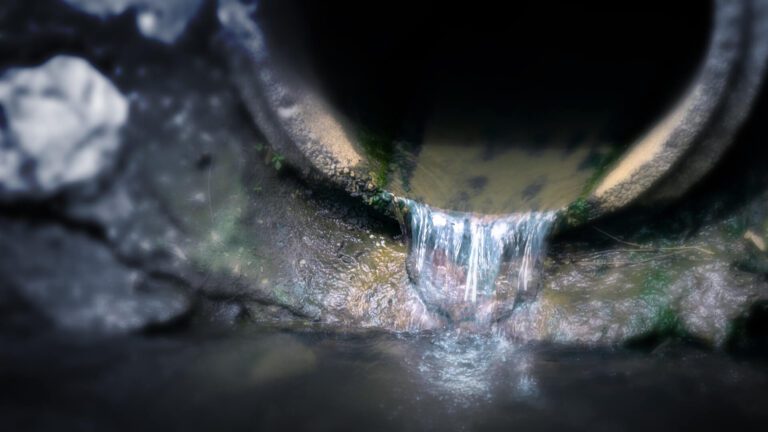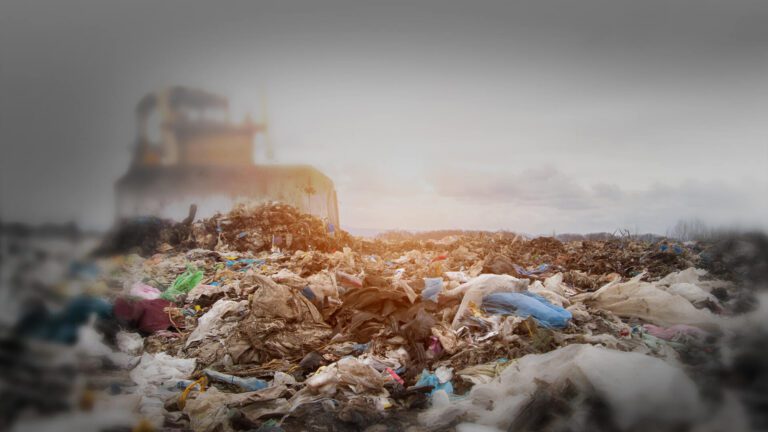
Water Contamination Litigation
Water litigation is a cornerstone of Beasley Allen’s toxic torts section. We understand the health of our bodies and our environment are directly tied to the purity of the natural resources from which we draw our drinking water.
Nobody disputes the connections between clean water and human health. Yet, water contamination continues to be a growing problem in the U.S. Toxic chemicals can make their way into underground water tables, rivers, lakes and reservoirs, and even rain. We believe it is critical to hold those who contaminate our waterways and our drinking water to account.
Our outstanding history of water litigation reflects our commitment to holding companies and other groups accountable. We hold a $700 million verdict for polychlorinated biphenyls (PCB) contamination. This is currently the largest private environmental settlement in U.S. history. Our firm’s water lawyers also helped secure a colossal $2 billion agreement from oil giant BP for the State of Alabama. The Deepwater Horizon explosion caused one of the worst environmental disasters in US history.
Groundwater Contamination
According to the Groundwater Foundation, more than half of Americans get their drinking water from underground water sources. Even though this water flows deep in underground aquifers, it remains highly susceptible to groundwater contamination.
Industrial pollutants and harmful microbes released on land can seep through the soil. Driven by gravity and the introduction of rainwater, pollutants spilled, discharged, or released on land eventually reach underground water tables. These tables provide drinking water for millions of people.
Common Sources of Groundwater Contamination:
- Industrial spilling or dumping: Oil, chemicals, salt, and other toxic substances may be intentionally dumped, accidentally spilled, or released from containment ponds.
- Storage tanks: More than 10 million storage tanks containing oil, gas, and chemicals lay buried in the U.S. Many of these are several decades old and are decaying, releasing harmful toxins into the soil and groundwater.
- Landfills: Toxic substances dumped in landfills can leach through the soil and into nearby bodies of water.
- Abandoned and uncontrolled hazardous waste sites: These are more abundant than you might think. According to the Groundwater Foundation, some 20,000 abandoned and/or uncontrolled industrial, military, and government hazardous waste sites are at risk of releasing contaminants into the environment.
- Hydraulic fracturing or “fracking”: This controversial form of natural gas extraction relies on an undisclosed cocktail of chemicals injected into underground shale deposits. Fracking companies insist this method is safe. Unfortunately, one accident is all it takes to pollute an entire underground water source.
- Road salts and chemicals: Salts and chemicals used to keep roads de-iced or free of weeds can contaminate the soil.
- Atmospheric pollutants: The water supply on earth is finite, and groundwater is part of the water cycle. The water cycle constantly recycles and reforms H2O into vapor, ice, and liquid water. Any contaminant present in one form may eventually contaminate other water sources.
- Agricultural applications and runoff: Fertilizers, herbicides, and pesticides used on farms can enter well water through the soil or runoff. In recent years, widespread use of glyphosate-based Roundup has presented an escalating concern about its environmental and human health effects. Another popular herbicide, paraquat, has recently been linked to Parkinson’s Disease.
Water Laws and Regulations
The United States has had clean water laws in place since 1948. Still, it wasn’t until the 1970s that two federal laws vastly expanded water protections throughout the country. These two laws set standards for drinking water quality:
The Clean Water Act
The Clean Water Act: In 1972, U.S lawmakers reorganized and expanded the Federal Water Pollution Control Act to form the Clean Water Act (CWA) that we know today. The CWA establishes the basic structure for regulating discharges of pollutants into U.S. waters. It also sets quality standards for surface waters.
With the CWA, the U.S. Environmental Protection Agency (EPA) implements pollution control programs, such as setting wastewater standards for the industry and sets the bar for national water quality standards. States may set their own criteria for pollution controls and water quality, but the state regulations must meet federal standards.
The Safe Drinking Water Act
The Safe Drinking Water Act: The Safe Drinking Water Act is a federal law enacted in 1974 to regulate and protect drinking water drawn from public sources, such as rivers, lakes, springs, and groundwater wells, excluding private wells that provide water to fewer than 25 people.
The EPA sets the safety threshold for more than 90 contaminants in drinking water at the federal level. Water authorities must regularly test the public water supply for these contaminants and report their findings to the EPA. Polluters and local water authorities must clean public water supplies containing pollutants above the EPA’s safety threshold. The EPA will direct the water authority on the measures it must take in such cases.
States can establish their own drinking water standards as long as they meet the federal standards set by the EPA. The EPA and state authorities can also take enforcement actions against water authorities that violate the minimum safety standards and put consumers at risk.
Violations of the Clean Water Act and Safe Drinking Water Act that result in the contamination of water supplies and put people at risk of illness, injury, or death may spotlight poor industrial practices and/or negligence and can serve as important factors in water litigation.
What are PFAS? Should I be concerned about them?
PFAS are a family of human-made chemicals with strong water- and oil-repellant properties. They are also at the center of a growing body of groundwater contamination litigation. For decades, these chemicals have been widely used in the manufacture of non-stick, stain-resistant, and water-repellant coatings on fabric, upholstery, carpeting, nonstick cookware, firefighting foam, and a multitude of other products. Experts have dubbed them “forever chemicals” because they don’t break down in the environment. They accumulate in the human body over time, potentially leading to a spectrum of health problems.
Regulators have phased two of the most widely used and toxic PFAS chemicals out of use in the U.S. — perfluorooctanoic acid (PFOA) and perfluorooctanesulfonic acid (PFOS). Unfortunately, foreign companies continue to use them for the manufacture of products they import into the U.S.
The Federal Aviation Administration (FAA) also requires the use of firefighting foam containing PFAS for aviation firefighting operations at airports and military bases. These chemicals can and do find their way into the soil, nearby waterways, groundwater, municipal water supplies, and private wells.
A study by the Environmental Working Group and Northeastern University environmental health researchers located PFAS groundwater contamination in 43 states, including drinking water sources that serve approximately 20 million people. Industrial and military operations account for most of the PFAS-contaminated sites.
Chemicals in the PFAS family vary in toxicity, but PFAS and PFOS are among the most hazardous for human health. Epidemiological studies have shown that exposure to chemicals, even in trace amounts, can lead to serious health problems.
PFAS Health Risks:
- developmental effects to fetuses during pregnancy or to breastfed infants, including:
- low birth weight
- accelerated puberty
- skeletal variations
- testicular, kidney, pancreatic, and other cancers
- liver damage
- adverse immune effects such as lowered antibody production and weakened immunity
- cholesterol changes
- thyroid problems
Beasley Allen’s Water and Groundwater Contamination Litigation
Benzene is a colorless or pale-yellow chemical formed in some natural processes and is also a byproduct and ingredient in a multitude of industrial applications. It is a major threat to the environment and is extremely toxic to human health. According to the American Cancer Society, it is one of the top 20 most used and produced chemicals in the U.S. It is so common, in fact, that it has recently been discovered at dangerous levels in many popular sunscreen and other sun care products.
People often inhale benzene as a gas through automobile exhaust and industrial emissions, but water contamination is another major source of exposure. The chemical quickly evaporates when exposed to air, but it can linger for months or years when concentrated in soil or groundwater. People who draw water from wells that contaminated with benzene should avoid bathing in it. The body can also absorb benzene through the skin. When companies dump or release benzene into the environment in large concentrations, it can lead to toxic exposures for workers and sometimes even entire communities.
Underground Storage Tanks
Beasley Allen also handles cases involving leaking underground storage tanks. Thousands of storage tanks containing gasoline, oil, and other potentially toxic substances lay buried near gas stations throughout the Southeast and other parts of the country. Over time, these underground storage tanks can erode and develop leaks. When these containers leak, petroleum contaminants can move through the soil and pollute groundwater supplies with toxins including benzene, MTBE, toluene, ethylbenzene, and xylene.
Prolonged exposure to benzene and these other chemicals has been linked to many cancers, central nervous system damage, respiratory illnesses, kidney disease, liver dysfunction, and blood disorders.
Legionnaire’s Disease
Legionnaires Disease is a serious type of pneumonia caused by inhaling water vapor or mist contaminated with the legionella bacteria. Once inside the body, the bacteria can rapidly multiply and infect the lungs. The bacteria can also infect humans when contaminated water is accidentally ingested into the lungs.
The Legionella bacteria are found naturally in lakes, ponds, streams, and other freshwater environments, but it becomes a health risk when it multiplies to form high concentrations inside human-made water systems, such as cooling towers for industrial air conditioning systems, plumbing systems, evaporative condensers, pools and spas, decorative fountains, and even inside water hoses, showerheads, and faucets. Legionella bacteria cannot thrive in water systems that are routinely cleaned and properly maintained.
Legionnaires Disease symptoms manifest in various forms of pulmonary distress, including coughing, shortness of breath, fever, muscle aches, and headaches. This form of pneumonia can also result in nausea, diarrhea, and confusion. Older patients are particularly vulnerable to this disease. According to the U.S. Centers for Disease Control and Prevention (CDC), about one in ten people who contract Legionnaires Disease die.
Outbreaks of Legionnaires Disease are on the rise throughout the U.S., triggering a significant increase in U.S. water litigation. According to the CDC, state health departments report about 7,500 cases of the disease every year. However, because it is an underdiagnosed and underreported disease, the actual number of cases is believed to be more than twice the reported number. Water litigation involving Legionnaires Disease has steadily grown alongside the number of outbreaks in the past two decades.
Flint Water Crisis
Water can also become contaminated when it travels through plumbing systems that aren’t properly treated or maintained. Acidic water can promote corrosion in copper and lead pipes, delivering heavy metals and other toxins into your home.
That is what happened in the Flint Water crisis – an ongoing public health crisis that started in Flint, Michigan, in 2014 after city officials started tapping the highly contaminated Flint River for drinking water. State and city officials made this change without first treating the water with an anti-corrosive agent to prevent leaching from lead pipes. In April 2019, a U.S. Judge found that the U.S. Environmental Protection Agency was also to blame for the crisis, saying evidence showed the agency “was well aware that the Flint River was highly corrosive and posed a significant danger of lead leaching” to Flint residents.
As a result, the groundwater contamination exposed as many as 12,000 children to harmful levels of lead. The water crisis also sickened at least 99 people with Legionnaires Disease, including 10 people who died.
The Flint Water crisis has since triggered a much broader concern about the threat of water contamination from lead pipes nationwide. One study cited by National Geographic estimated that “3.3 million utility service lines contain lead—plus twice as many connecting pipes, and countless amounts of lead solder. In addition, many homes have plumbing that contains the hazardous metal.”
Water Utility Rate Cases
Some water litigation involves economic losses unrelated to injury. Beasley Allen is investigating cases on behalf of municipalities that installed “smart” or automated water meters and/or billing software systems that have malfunctioned and resulted in a loss of water collection revenue.
These systems are typically marketed to municipalities as an upgrade to the existing manual water meters that require a meter reader to physically check the amount consumed at a particular location and report those figures to the bill. Sellers pitch these upgrades as “self-paying” because they claim to result in more accurate measures of water consumption, more efficient collection of revenue, and streamline personnel by no longer requiring water meter readers.
Unfortunately, automated water meters installed by some municipalities had manufacturing or design defects that caused inaccurate meter readings, failed to transmit water consumption data to water service personnel automatically, and issued inaccurate water bills to customers. These issues disrupted water revenue collection and forced municipalities to incur additional costs to fix the problems.
Do You Have a Water Litigation Claim?
Beasley Allen water lawyers in our Toxic Torts Section work to protect people and property from toxic chemicals and environmental pollution that result from negligence and wrongful conduct. Our lawyers are currently investigating water contamination due to PFC chemicals and other types of water litigation. If you have any questions about a potential claim, please contact Rhon Jones, Rick Stratton, or Ryan Kral, who handle water litigation for our firm. In addition to filing claims for individuals, we also often represent state and municipal governments in litigation of this type.
Related News
Camp Lejeune Litigation Enters Second Stage – Filing Lawsuits
On Aug. 10, 2022, President Biden signed the Camp Lejeune Justice Act (CLJA), which created a…
Beasley Allen Files Lawsuit Against Tallassee Landfill Leaking Toxic Pollutants Into Local Water Supplies
Beasley Allen attorney Gavin King filed a lawsuit on behalf of local landowners against Stone’s…
Our Firm is Handling Thousands of Camp Lejeune Claims
In August, a new law paved the way for Camp Lejeune water contamination claims to…



